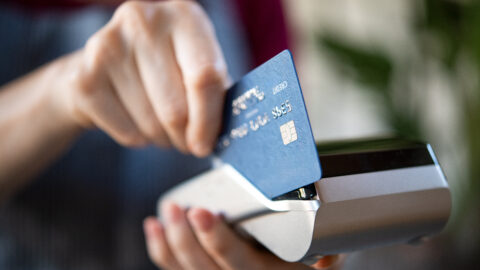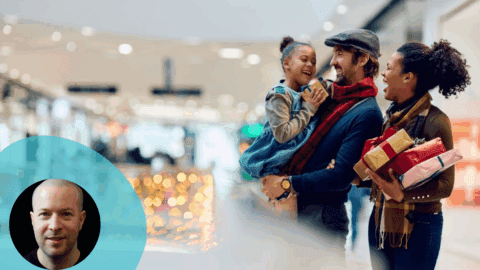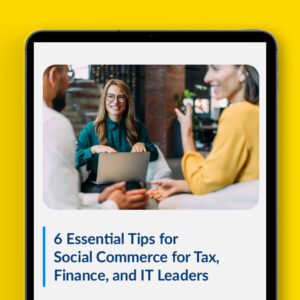Mobile watchers argue that there are already plenty of reasons retailers should be considering in tapping into the power of the iPhone. The device has a much more interactive interface than other smartphones, providing capabilities that can help retailers deliver a more content rich, entertaining and exciting experience, including:
- The iPhone’s accelerometer can tell when it’s being shaken or moved
- The ability to flip pages offers a much more catalog like experience than you can get on the mobile Web.
- Geolocation identifies where users are, so store or item locating is made easy for the shopper.
- Facebook Connect integrates the power of social networking with the iPhone, giving shoppers the ability to share items with friends.
- Push updates– as part of the 3.0 software release, this will offer iPhone users the ability to review real time information. Retailers can use this for updates in promotion and coupon offerings.
 One of the creative new shopping applications for the iPhone was debuted by the Condé Nast magazine Lucky, whose audience is primarily women who love to shop. The iPhone application, Lucky at Your Service, ties into stores’ inventories. The application features more than 70 shoes listed in its March shoe guide (including those of advertisers), and lets shoppers browse by type of shoe, brand, color or size. After users choose a specific shoe model, they can click the “Find It Near You” button. That will use either GPS or a ZIP code to determine which stores in the area have that shoe available.
One of the creative new shopping applications for the iPhone was debuted by the Condé Nast magazine Lucky, whose audience is primarily women who love to shop. The iPhone application, Lucky at Your Service, ties into stores’ inventories. The application features more than 70 shoes listed in its March shoe guide (including those of advertisers), and lets shoppers browse by type of shoe, brand, color or size. After users choose a specific shoe model, they can click the “Find It Near You” button. That will use either GPS or a ZIP code to determine which stores in the area have that shoe available.
SHAKING UP RETAIL
Analysts agree that the mobile Web can help retailers deliver a richer experience for customers via an iPhone app. The apps create marketing buzz, entertainment value and practical value. A popular retail application, One of the most prominent examples of the powerful iPhone apps is Amazon Remembers, which allows consumers to take a photo of an item from a retail store which then gets sent to Amazon. Within minutes, Amazon will send an email identifying the item and giving the consumer a link of options to buy directly from the Amazon site, also serving as a price comparison feature.
Barenblat says the content of iPhone apps can also provide value through utility, like REI’s Snow Report application, which keeps the retailer top of mind simply by providing users with real time information on the best conditions for up to three resorts at a time offering snow and lift status reports, weather forecasts and live Web cam shots.
Keith Lietzke, VP of Marketing and Business Development at Unbound Commerce, says many of their clients are developing an iPhone app focused on customers they interact with most frequently. Unbound Commerce is currently building an iPhone application for outdoor retailer Moosejaw, which will provide the ability to share photos and video on an online community.
Lietzke adds that retailers should also serve customers in the store who use their mobile phones to browse. Retailers should provide them with an enhanced in-store experience by enabling them to access your site so they can find information to complement what they have found in the store, like customer reviews.
Ahlund, who created AppVee in June of 2008 to offer a filter for the 30,000+ applications in the app store, says he hasn’t seen much innovation in retail applications, but that there’s definitely room for it. “The buzz is short lived, so what you really want to focus on is providing a sticky experience so users will keep coming back to the application…[apps] that have a cool novelty to them is definitely something that would help a lot of retailers, and we haven’t seen so much of that so far.” He says one approach retailers could take is adver-gaming—branded games where consumers can play and a certain score offers a discount code to take to the store.
“The retail shopping apps that do not do so well provide limited information and limited interaction,” says Ahlund. “The best approach for retailers is to have a full features application where you can browse every section of the Web site, every department and product, and physically buy them from the phone.”












